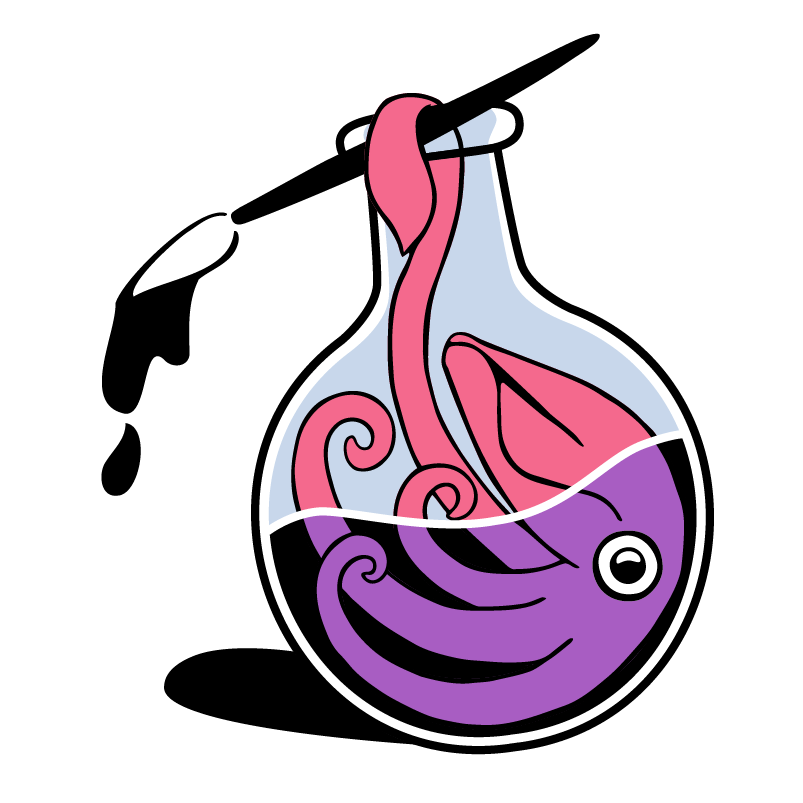The Electrochemical Gradient
The electrochemical gradient is a form of stored energy established by the uneven distribution of hydrogen ions and is essential in facilitating oxidative phosphorylation.
What is an electrochemical gradient?
Due to the impermeability of the phospholipid bilayer, H+ ions cannot freely diffuse across the inner membrane.
This has two implications. The first is that an electrochemical gradient, or a difference in electrochemical potential generated across the inner membrane. This potential will later be used by ATP synthase to synthesize ATP through a process called chemiosmosis.
The second is that the respiratory complexes are pumping protons against their electrochemical gradient i.e., energy must be put in to the ETC to pump protons across the inner membrane. Enter electron carriers, which ferry energy into the ETC in the form of electrons.
The electrochemical gradient is caused by the respiratory complexes pumping protons.
As the respiratory complexes pump protons, H⁺ (positively charged hydrogen ions) from the matrix to the intermembrane space, an electrochemical gradient forms. It consists of two parts: an electrical gradient and a chemical gradient.
An electrical (voltage) gradient is caused by a difference in charge across the inner membrane, generating a membrane potential. As protons are pumped out of the matrix, it becomes more negatively charged, and the IMS becomes more positively charged.
A chemical (concentration) gradient is caused by a difference in solute (H⁺) concentration across the inner membrane. Proton pumping causes the IMS to have a higher concentration of H⁺ ions, meaning it will be more acidic than the matrix.
By diffusion, molecules flow across a membrane from areas of high to low concentrations of solute until equilibrium is reached on either side of the membrane. Ions, which carry an electrical charge, will generate an electrical potential across the membrane. This generates a force that drives ion diffusion across the membrane until electrical charges are balanced.
A Closer Look at Electron Carriers & Oxidation-Reduction Reactions
What are electron carriers?
Electron carriers are small organic molecules that carry electrons from one molecule to another during cellular respiration. Electrons are transferred between molecules through redox reactions.
In oxidative phosphorylation, the energy released from glucose is gradually captured through a series of oxidation-reduction (redox) reactions. In these redox reactions, electrons from glucose are delivered to the ETC by electron carriers.
Why use electron carriers?
Electron carriers are important because they allow the cell to get as much energy as possible out of each molecule of glucose. All molecules (electron carriers) that enter the ETC were formed in earlier steps of cellular respiration. After succinate is stripped of its electrons (oxidation), it returns to the citric acid cycle as fumarate. Likewise, NAD returns to the earlier pathways to pick up more electrons.
Several electron carriers are present in the ETC:
Ubiquinone (Q) is a lipid-soluble mobile coenzyme that is composed of a quinone and 10 isoprene groups. It can accept a total of two electrons and two protons and has three redox states: fully oxidized (Q), semiquinone (·QH), and fully reduced (QH₂). Molecules of ubiquinone shuttle electrons from CI and CII to CIII where they enter the Q cycle.
Q + e- + H⁺ → ·QH + e- + H⁺ → QH₂
Flavin Adenine Dinucleotide (FAD) is a coenzyme composed of an adenosine monophosphate (AMP) and a flavin mononucleotide (FMN) bound by a pyrophosphate bond. FAD can accept two electrons and two protons and exists in the cell in two redox states: fully oxidized (FAD) and fully reduced (FADH₂). FAD is a prosthetic group of CII.
FAD + 2e- + 2H⁺ → FADH₂
Flavin Mononucleotide (FMN) is a coenzyme formed from riboflavin (vitamin B2). FMN is unique in that it can undergo redox reactions in which it either gains/lose a hydride ion (H⁻) and a proton or it can gain/lose one electron and one proton at a time. It has three redox states, fully oxidized (FMN), semiquinone (FMNH), and fully reduced (FMNH₂) and is a prosthetic group of CI.
FMN + H⁻ + H⁺ → FMNH₂
Nicotinamide Dinucleotide (NAD) is a coenzyme that consists of an adenine mononucleotide (AMP) and a nicotinamide nucleotide joined by a pyrophosphate bond. NAD can donate or accept two electrons and one proton. It has two redox states, fully oxidized (NAD⁺) and fully reduced (NADH). It is formed in the citric acid cycle and oxidized in CI.
NAD⁺ + 2e- + H⁺ → NADH + H⁺
Succinate is a metabolite that is formed from succinyl CoA in the citric acid cycle (TCA) in the mitochondrial matrix. From the TCA, succinate enters the electron transport chain (ETC) of oxidative phosphorylation. In Complex II (Succinate Dehydrogenase), succinate is oxidized to fumarate by the prosthetic group FAD.
succinate → fumarate + 2e-
